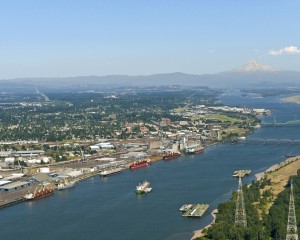Columbia River channel deepening brings investment, certainty for ports and businesses
 A June 2015 study of the Columbia River channel deepening project shows this vital effort is bearing fruit, to the tune of $1.08 billion in public and private investment since its completion in 2010. Another $5.15 billion is planned for future investment in new facilities and expansions along the West’s mightiest river.
A June 2015 study of the Columbia River channel deepening project shows this vital effort is bearing fruit, to the tune of $1.08 billion in public and private investment since its completion in 2010. Another $5.15 billion is planned for future investment in new facilities and expansions along the West’s mightiest river.
The study, funded by the Port of Portland, outlined how completion of a 43-foot-deep shipping channel on the Columbia “opened a floodgate of investments at terminals and ports along the river” and gave shipping and commodity firms “certainty that ports, terminals and vessels can manage the mix of commodities and tonnage that today’s global economy requires.”
Pacific Northwest ports and businesses are faced with substantial market demand in the Pacific Rim, an expanding Panama Canal and increasingly competitive worldwide shipping systems. According to the study, a deeper Columbia River shipping channel provides the capacity and confidence businesses need to move forward with investments that keep commerce flowing and people in our region working.
“Many terminal operators indicated that without the deepening they would not have invested in upgrading their facilities,” the study said. “With growing demand from China and other countries along the Pacific Rim, this would have been a significant lost opportunity for terminal operators and shippers.”
Investments completed to date include:
- Expansion of the largest export grain terminal on the West Coast of the U.S. – United Grain Corp. at the Port of Vancouver USA
- The first new grain terminal built in the U.S. in 25 years – Export Grain Terminal at the Port of Longview
- The first new grain barge on the Columbia River since 2011 – Shaver Transportation in Portland
- The largest dry dock in the U.S. – Vigor Industrial in Portland
Investments at the Port of Vancouver include the $80 million expansion of United Grain Corp. mentioned above; $275 million in ongoing rail improvements to meet tenant and customer transportation needs; and more than $100 million in additional investment identified to date.
